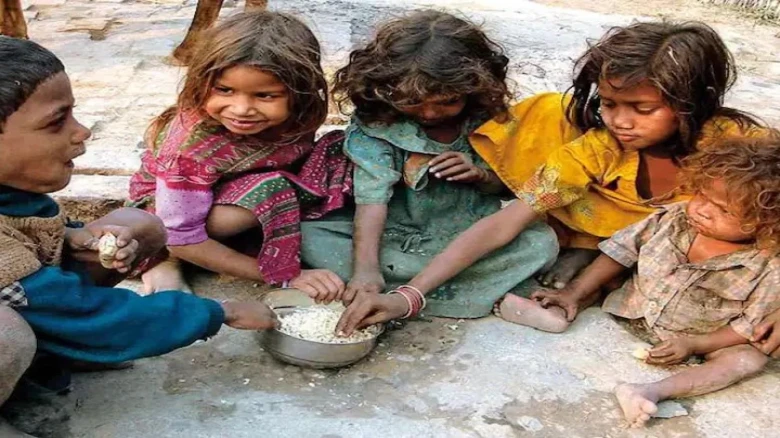The government has rejected the GHI rankings for the second year in a row.
Digital Desk: According to the Global Hunger Report 2022, India's GHI score of 29.1 on a scale of 0 to 100, with zero representing no hunger, was lower than the previous year's score of 28.2. India was also ranked lower than all of its neighbours, with the exception of war-torn Afghanistan. China, on the other hand, was among the countries ranked between 1 and 17 in terms of least hunger.
The government, on the other hand, has rejected the Global Hunger Index (GHI) 2022, which ranks India 107 out of 121 countries, calling it "an erroneous measure of hunger" and an attempt to "taint" India's image. It also claims incorrectly that the rankings are based on an opinion poll.
"Three of the four indicators used to calculate the index are related to children's health and cannot be representative of the entire population," according to a press release issued by the Ministry of Women and Child Development. The government has rejected the GHI rankings for the second year in a row.
It goes on to say that the fourth indicator, the estimated proportion of undernourished (PoU) population, is based on an opinion poll conducted on a very small sample size of 3000 using the Food and Agriculture Organization's "Food Insecurity Experience Scale (FIES)" Survey Module- a claim that was also rejected last year by representatives of the Global Hunger Index.
The GHI scores are calculated using four indicators - undernourishment, child stunting, child wasting and child mortality.
According to the GHI's website, it does not use FIES, but instead relies on the prevalence of undernourishment indicator, which is assessed by FAO using the Food Balance Sheet and is based primarily on data officially reported by member countries, including India. These show trends in the overall national food supply, reveal changes in the types of food consumed, i.e. the diet pattern, and reveal the extent to which the country's food supply is adequate in relation to nutritional requirements.
The GHI also states on its website that it uses three children-related indicators out of a total of four to assess hunger levels for an entire country in order to "capture both the food supply situation of the population as a whole and the effects of inadequate nutrition within a particularly vulnerable subset of the population."

Leave A Comment